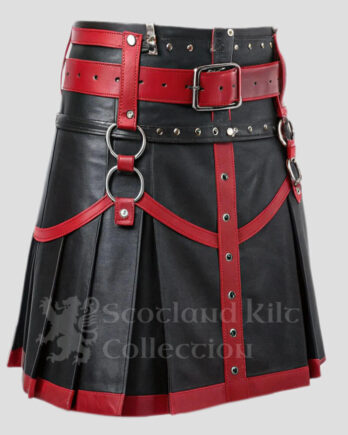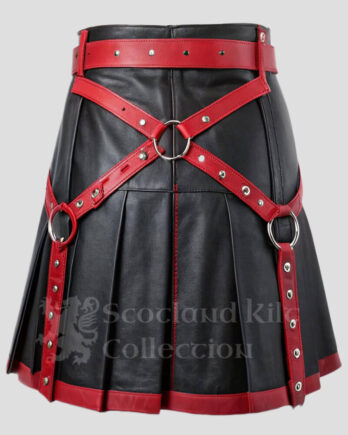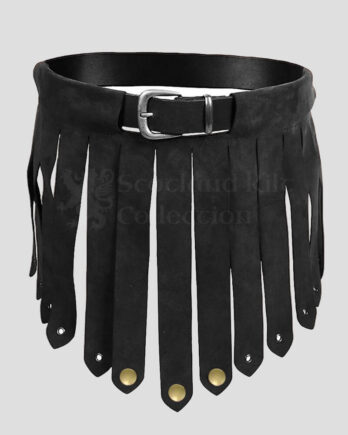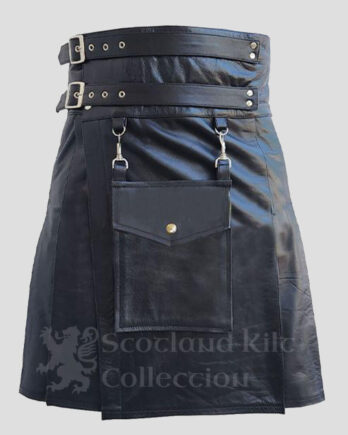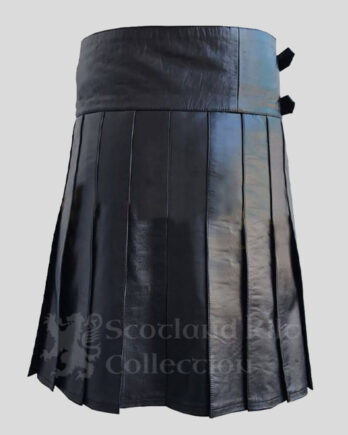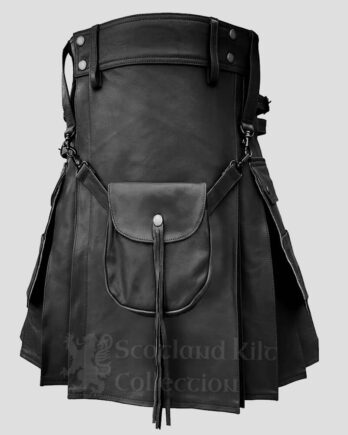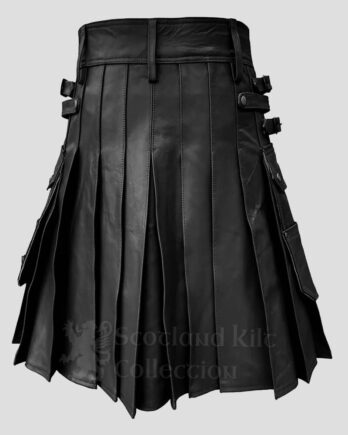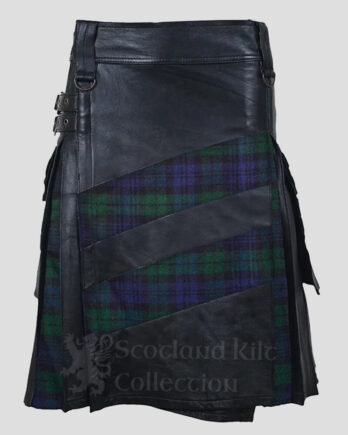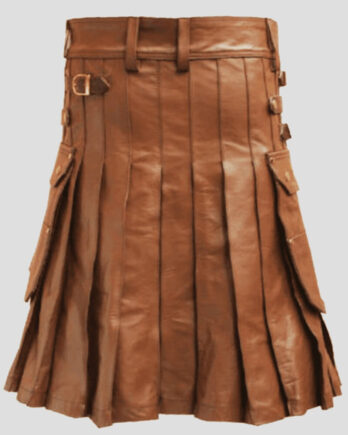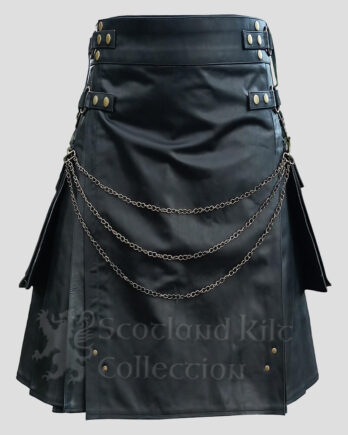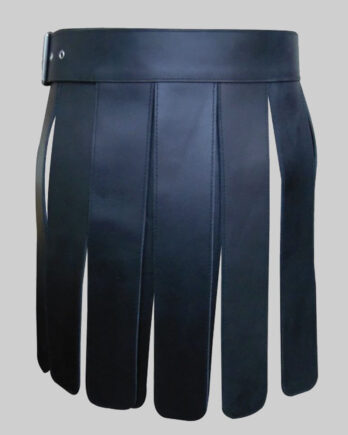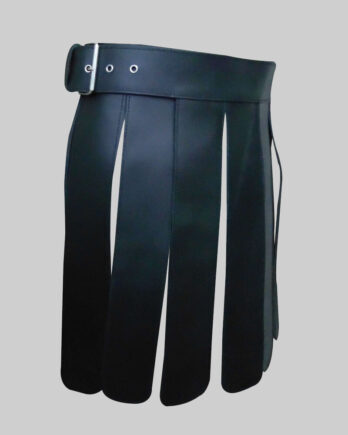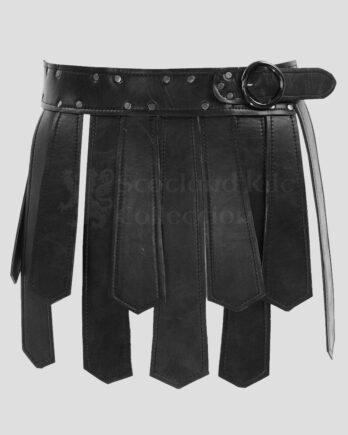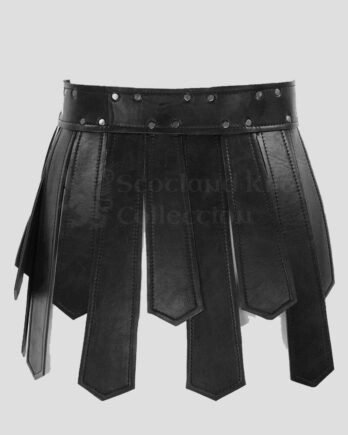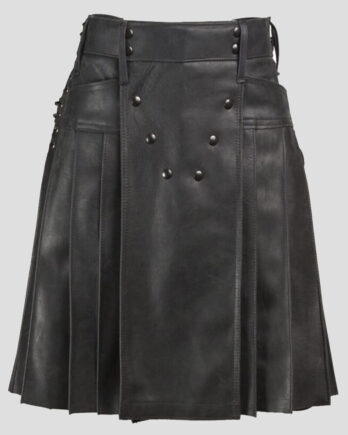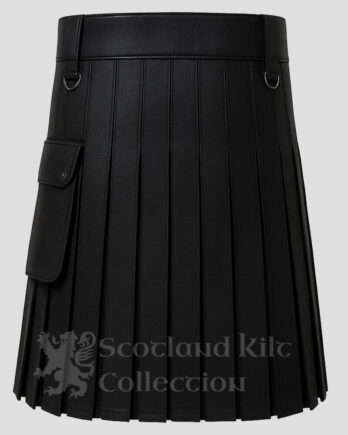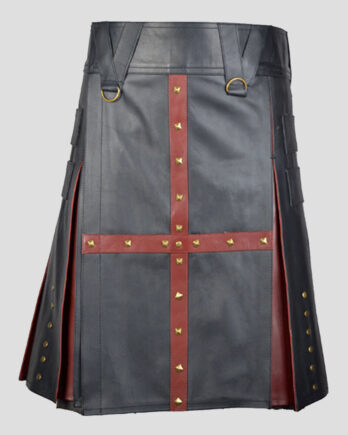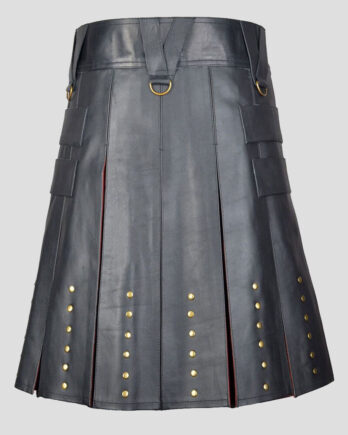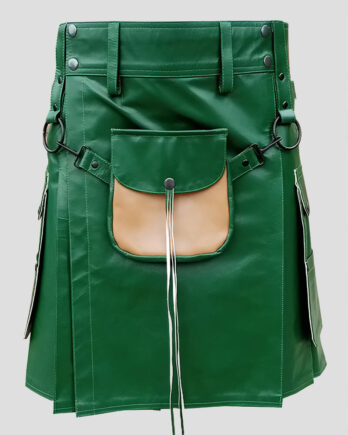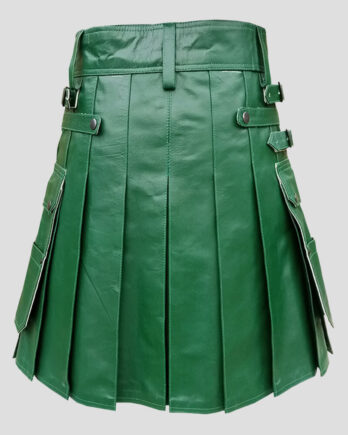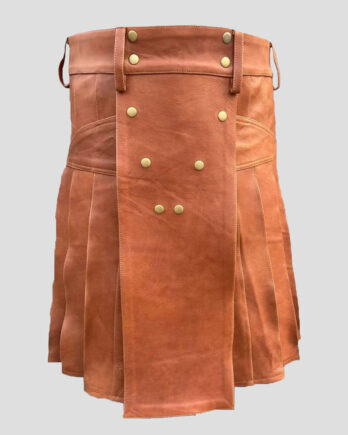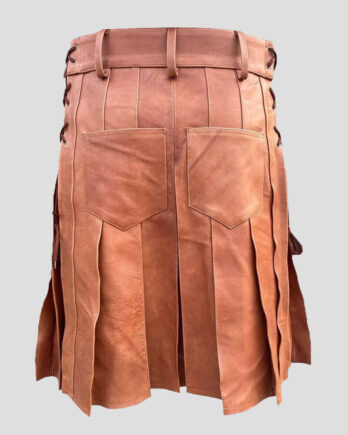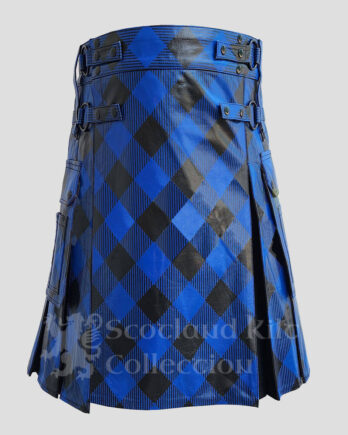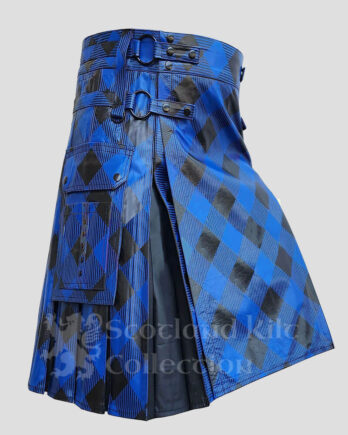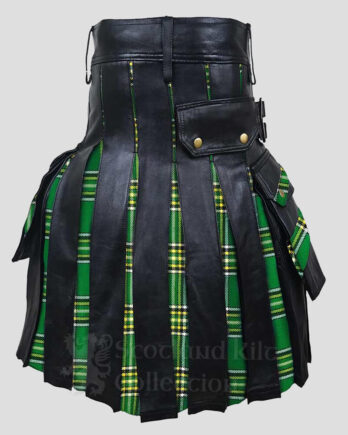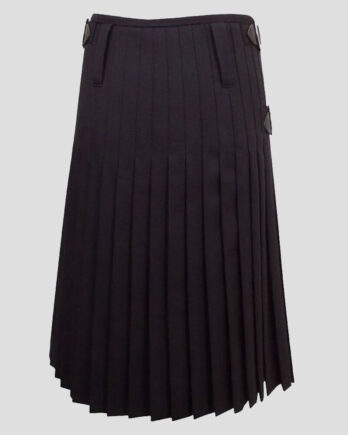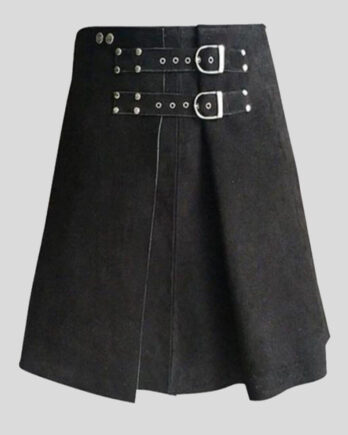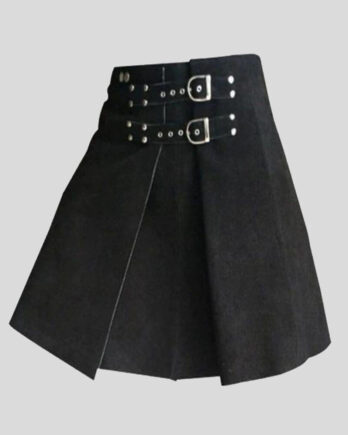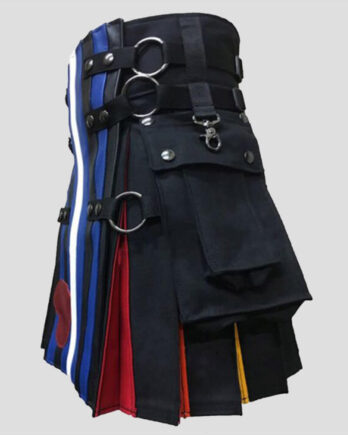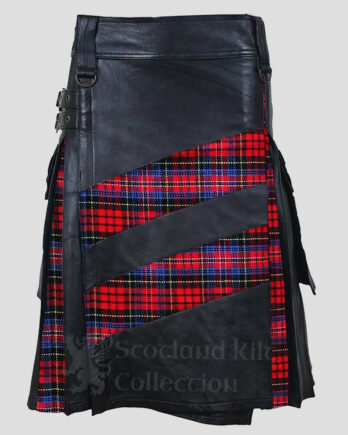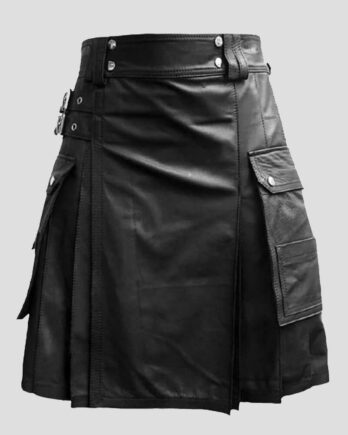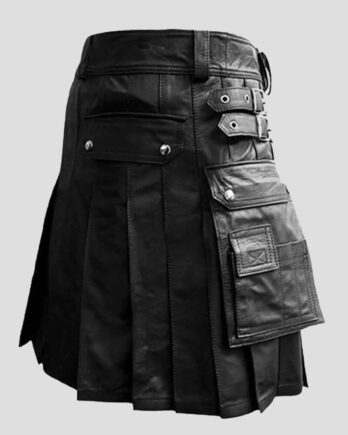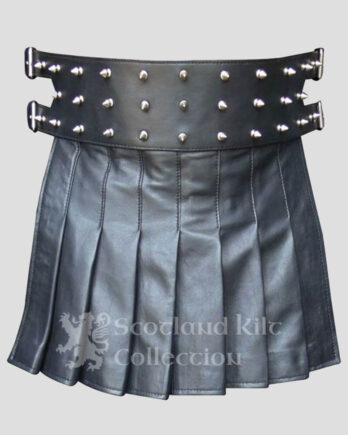Discover premium leather kilts for men at Scotland Kilt Collection, where tradition meets modern style. Our range includes classic designs, bold Kanye kilts, leather gladiator kilts, Warrior Leather Kilts, and Gothic Leather Kilts, all crafted from high-quality cow or sheep leather for lasting comfort and durability. Choose from colors like black, red, green, brown, tan, yellow, or white, or order a custom-made leather kilt to suit your style. Visit our collection, pick your favorite design, and shop with confidence knowing you’re getting genuine craftsmanship.
-
- Sale!
Black & Red Gothic Leather Kilt
- Original price was: $490.$319Current price is: $319.
-
- Sale!
Black Leather Gladiator Kilt – Keanu kilt
- Original price was: $299.$240Current price is: $240.
-
- Sale!
Black Leather Kilt with Detachable Front Pocket – Sexy kilt
- Original price was: $450.$280Current price is: $280.
-
- Sale!
Black Watch Tartan Leather Hybrid Kilt
- Original price was: $299.$289Current price is: $289.
-
- Sale!
Brown Leather Gladiator Kilt – Zach Braff kilt
- Original price was: $299.$240Current price is: $240.
-
- Sale!
Brown Leather Kilt With Sporran
- Original price was: $299.$289Current price is: $289.
-
- Sale!
Fashion Black Leather Kilt
- Original price was: $299.$279Current price is: $279.
-
- Sale!
Genuine Leather Gladiator Kilt – Liam kilt
- Original price was: $299.$260Current price is: $260.
-
- Sale!
Gladiator Gothic Steampunk Kilt – Dwayne kilt
- Original price was: $299.$240Current price is: $240.
-
- Sale!
Gladiator Kilt – Black Leather Pleated Kilt For Men’s
- Original price was: $320.$298Current price is: $298.
-
- Sale!
Gothic Halloween Leather Utility Kilt
- Original price was: $669.$299Current price is: $299.
-
- Sale!
Gothic Punk Black Leather Kilt – Kanye Kilt
- Original price was: $299.$279Current price is: $279.
-
- Sale!
Green Leather Kilt
- Original price was: $299.$289Current price is: $289.
-
- Sale!
Hybrid Blocks Printed Leather Kilt
- Original price was: $350.$299Current price is: $299.
-
- Sale!
Irish Heritage Tartan Leather Hybrid Kilt
- Original price was: $299.$289Current price is: $289.
-
- Sale!
Leather Apron Wool Kilt
- Original price was: $210.$190Current price is: $190.
-
- Sale!
Leather Gladiator Roman Warrior Kilt – Asher kilt
- Original price was: $299.$250Current price is: $250.
-
- Sale!
Leather Pride Flag Kilt With Rainbow Flash Pleats
- Original price was: $310.$290Current price is: $290.
-
- Sale!
McPherson Tartan Leather Hybrid Kilt
- Original price was: $299.$289Current price is: $289.
-
- Sale!
Men’s Black Leather Gladiator Pleated Utility Kilt – Theodore Kilt
- Original price was: $299.$250Current price is: $250.
-
- Sale!
Mini Studded Leather Kilt
- Original price was: $180.$170Current price is: $170.
Premium Leather Kilts for Men – Style, Comfort & Heritage
At Scotland Kilt Collection, we specialize in leather kilts for men that combine Scottish tradition with modern style. Each mens leather kilt is crafted from premium cow or sheep leather for durability, comfort, and elegance. Whether you’re looking for a classic leather kilt, a male leather kilt for festivals, or a leather kilt men can wear for formal events, our collection ensures every customer finds the perfect blend of heritage and fashion.
Tradition Meets Modern Craftsmanship
The traditional Scottish kilt has centuries of history, originally made from wool and worn by Highlanders with pride. Modern leather kilts reimagine this heritage with kilt leather that offers durability, a sleek look, and resistance to wear. Unlike wool, men’s leather kilts adapt to multiple climates while preserving Scottish culture’s spirit. These leather kilt mens designs are perfect for anyone seeking the strength of leather combined with the timeless style of Highland tradition.
The Growing Popularity of Leather Kilts
Over the years, leather kilts for men have grown in popularity beyond Highland ceremonies and weddings. Musicians, performers, and fashion enthusiasts embrace men’s leather kilts for their rugged style and versatility. From bold Gothic leather kilts with chains to Warrior leather kilts for historical reenactments, each male leather kilt offers individuality and confidence. Even celebrities wear leather kilt mens designs, proving they have become mainstream fashion for modern men worldwide.
Types of Leather Kilts We Offer
Our range includes:
- Traditional Leather Kilts – Classic pleated leather kilt mens styles for formal wear.
- Utility Leather Kilts – Functional men’s leather kilt designs with pockets and straps.
- Warrior & Gladiator Leather Kilts – Bold male leather kilt options inspired by ancient warriors.
- Gothic Leather Kilts – Dark, edgy leather kilt men wear for alternative fashion.
- Hybrid Leather Kilts – Creative blends of kilt leather with tartan or denim.
- Fashion Leather Kilts – Modern mens leather kilt designs with bright colors and cuts.
- Custom Leather Kilts – Personalized leather kilts for men who want unique styles.
Color Options for Every Style
While the black leather kilt men wear remains a timeless classic, we also offer leather kilts for men in brown, red, green, tan, yellow, and white. Neutral shades like black or brown work for weddings and formal events, while bolder colors like red or green give your male leather kilt a modern twist. With so many options, every man can find a leather kilt mens style that matches his personality and occasion.
Why Buy Leather Kilts from Scotland Kilt Collection?
Choosing Scotland Kilt Collection means investing in mens leather kilts made with authentic craftsmanship and premium materials. Our leather kilt mens designs use full-grain kilt leather for strength and comfort. We provide custom sizing, affordable pricing, fast worldwide shipping, and strict quality checks for every male leather kilt. From traditional leather kilt men wear to modern, fashion-forward designs, our products deliver heritage, style, and value in one package.
Caring for Your Leather Kilt
Maintaining your men’s leather kilt is simple. Use a damp cloth for cleaning, apply leather conditioner every few months, and store it in a cool, dry place away from sunlight. Hang your leather kilts on a padded hanger to preserve their shape. Proper care ensures every male leather kilt stays soft, stylish, and durable for years, whether for weddings, festivals, or everyday fashion.
Complete Your Highland Look
Finish your outfit with matching accessories like leather kilt belts, sporrans, Celtic jewelry, or Highland dress shirts. Each piece complements our leather kilts for men, helping you create a complete Highland look for weddings, cultural events, or festivals. With mens leather kilts from Scotland Kilt Collection, you can embrace tradition while expressing your own modern style confidently and authentically.


